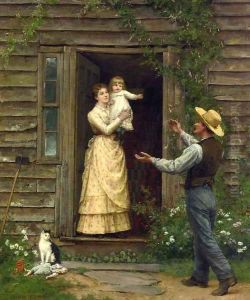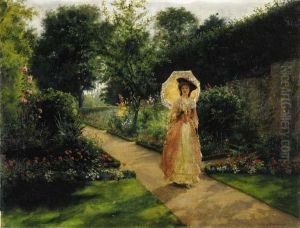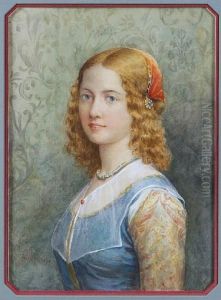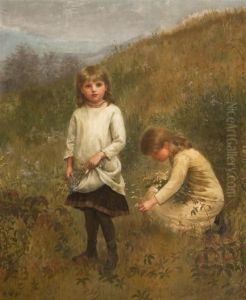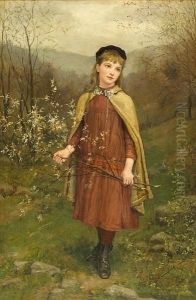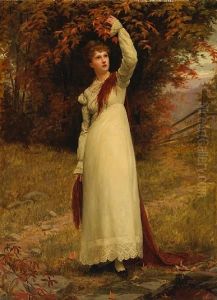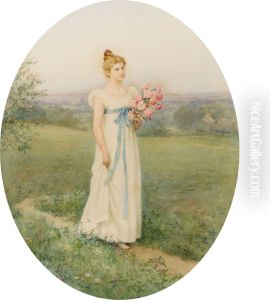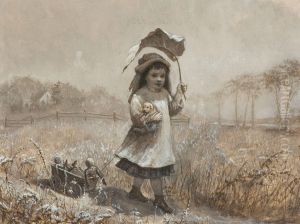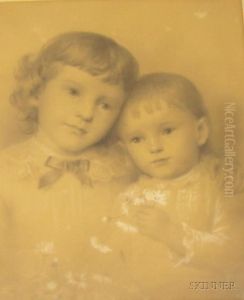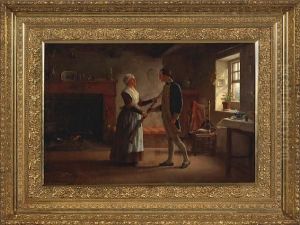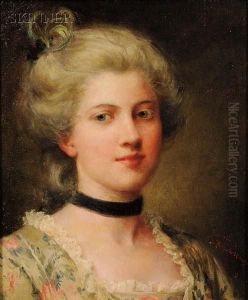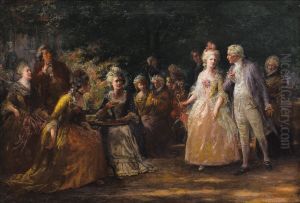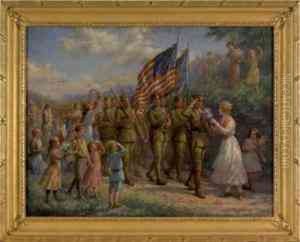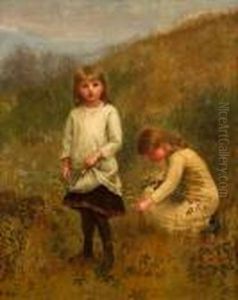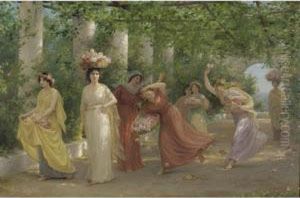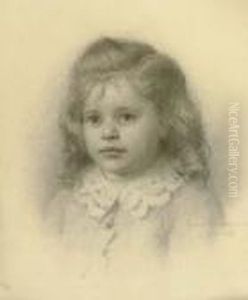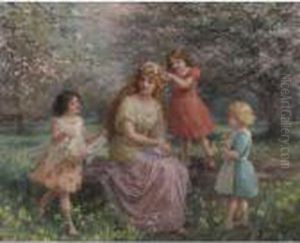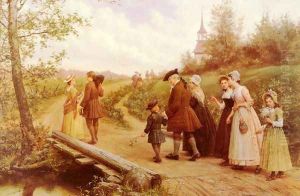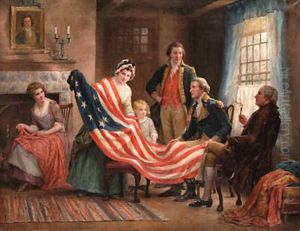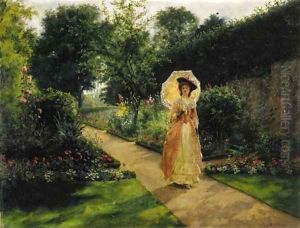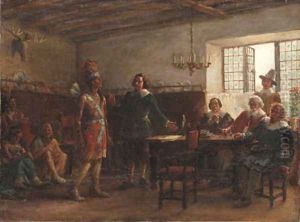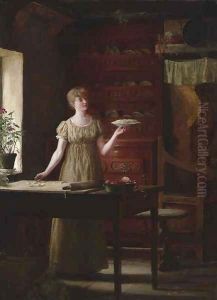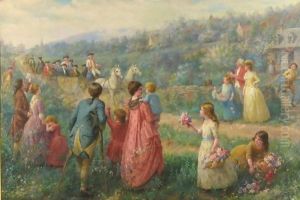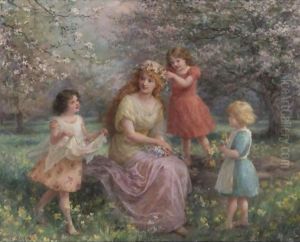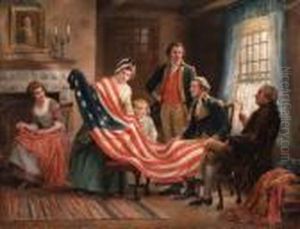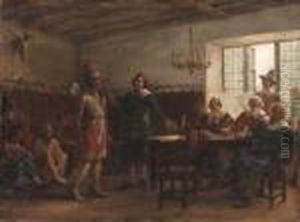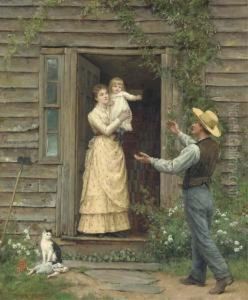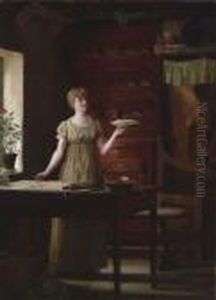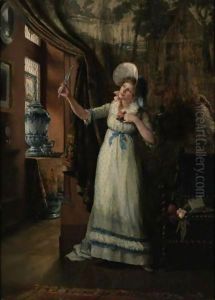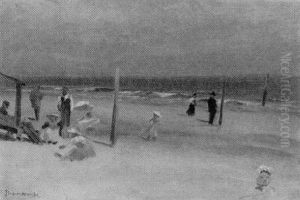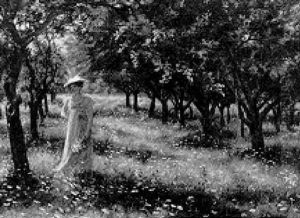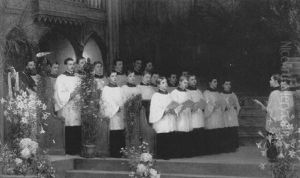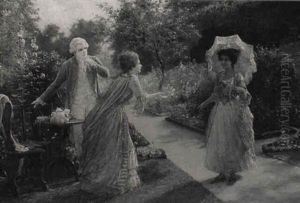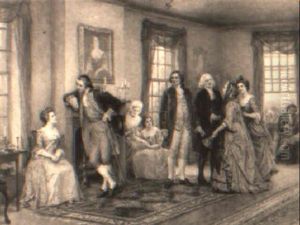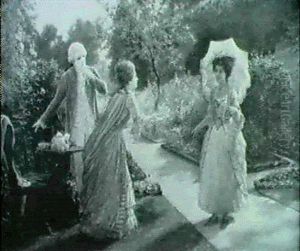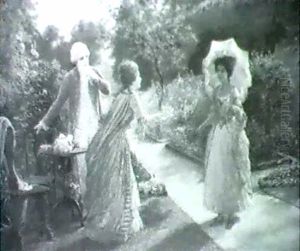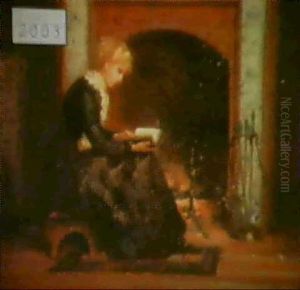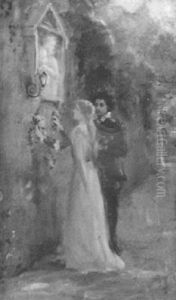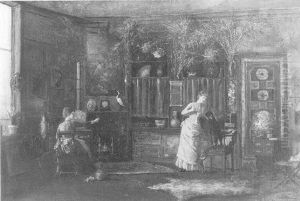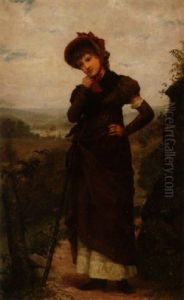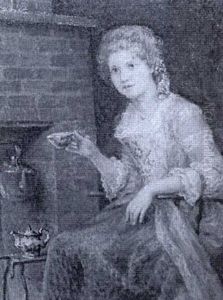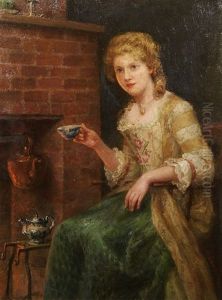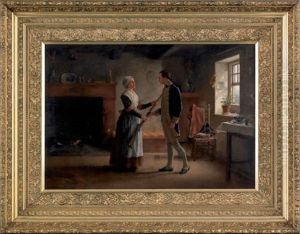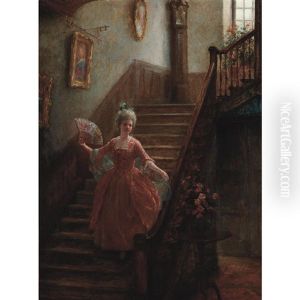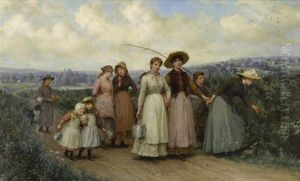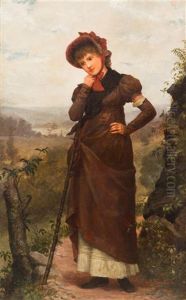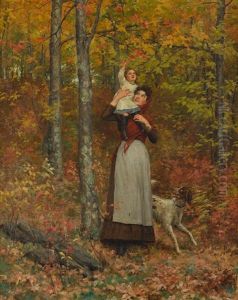Jennie Augusta Brownscombe Paintings
Jennie Augusta Brownscombe was an American painter, designer, etcher, and illustrator known for her depictions of historical events and everyday life in the late 19th and early 20th centuries. Born on December 10, 1850, in Honesdale, Pennsylvania, she was the daughter of English immigrants. Her father was a farmer and her mother a painter from whom Brownscombe inherited her artistic talents. She showed an early interest in art and began her formal education at the Cooper Institute in New York City, now known as the Cooper Union.
Brownscombe was one of the first women to study art at the institution and continued her studies at the National Academy of Design. She was a founding member of the Art Students League of New York, which was established to provide more practical training for artists than what was traditionally offered by the National Academy.
Her work gained public attention after she won a prize for a work exhibited at the Centennial Exposition in Philadelphia in 1876. This exposure helped establish Brownscombe as a reputable artist, and she soon became known for her genre paintings, which often depicted idealized scenes of American colonial life. One of her most famous works is 'The First Thanksgiving at Plymouth,' which was widely reproduced and became an iconic image of the Thanksgiving holiday.
Throughout her career, Brownscombe exhibited her work in prominent venues such as the Paris Salon, the Royal Academy of Arts in London, and the World's Columbian Exposition in Chicago. Her paintings are characterized by their detailed narrative quality and often carry a sense of nostalgia for earlier times.
In addition to painting, Brownscombe was successful as an illustrator, creating works for books and periodicals. She also designed stained glass windows and created etchings.
Jennie Augusta Brownscombe never married and spent much of her later life in Bayside, New York. She remained active in the art world throughout her life and was a member of various art organizations. She continued to paint into her old age, despite declining health. Brownscombe passed away on August 5, 1936, leaving behind a legacy as a pioneer for women in the arts and as a chronicler of American history through her art.
